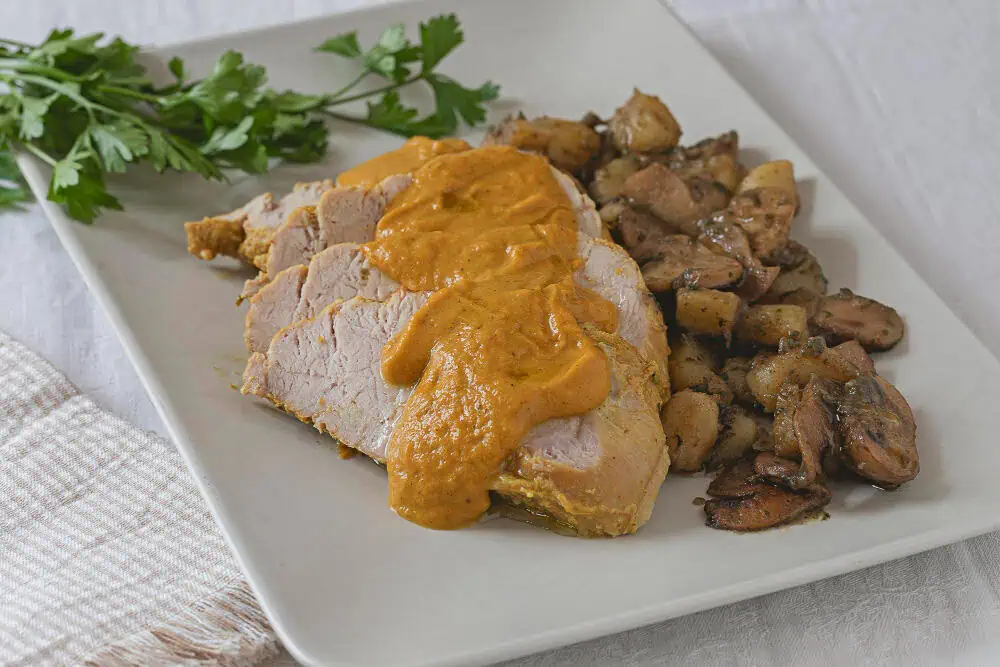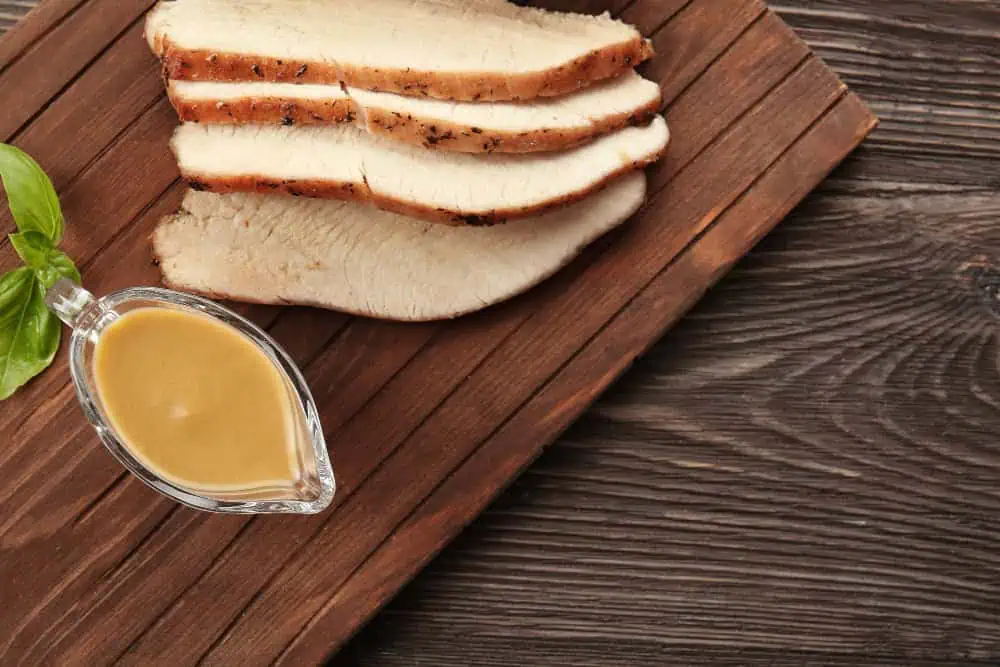Can we eat chicken and peanut butter together? This question may seem unusual, but this combination has been a staple in various cuisines worldwide for centuries. In this comprehensive guide, we’ll explore everything you need to know about combining these protein-rich ingredients and how to make the most of this versatile duo that’s gaining popularity in modern cuisine.
Understanding the Science Behind This Combination
The marriage of chicken and peanut butter isn’t just about taste – it’s backed by food science. The proteins in chicken (mainly myosin and actin) complement the plant-based proteins found in peanut butter, creating a complete protein profile that your body can efficiently utilize.
Chemical Composition and Flavor Profiles
When we examine why chicken and peanut butter work together, we need to consider:
- Umami Compounds in Chicken: Chicken is rich in umami flavors, which enhance the overall taste of dishes.
- Natural Oils in Peanut Butter: The fats in peanut butter add creaminess and depth to the dish.
- Protein Structures: The combination of animal and plant proteins can create a more balanced amino acid profile.
- Flavor Molecule Interactions: The nutty flavor of peanut butter complements the savory taste of chicken, creating a harmonious blend.
The Nutritional Powerhouse Effect
Macro-nutrient Breakdown
The combination provides an impressive nutritional profile:
- Protein: 45-50g per serving
- Healthy Fats: 15-20g
- Complex Carbohydrates: 8-12g
- Fiber: 2-3g
Micronutrient Benefits
This pairing offers essential nutrients including:
- B-vitamins from Chicken: Important for energy metabolism.
- Vitamin E from Peanut Butter: An antioxidant that helps protect cells.
- Iron from Both Sources: Crucial for oxygen transport in the blood.
- Zinc and Selenium: Important for immune function.
- Potassium and Magnesium: Essential for muscle function and heart health.
Popular Culinary Applications
Traditional Asian Dishes
The combination of chicken with peanut butter has deep roots in Asian cuisine:
- Chicken Satay with Peanut Sauce: A popular street food in Indonesia and Thailand, featuring marinated chicken skewers served with a rich peanut sauce.
- Thai Peanut Chicken Curry: A creamy and spicy curry that combines chicken with a peanut-based sauce, often served with rice.
- Indonesian Gado-Gado with Chicken: A salad of boiled vegetables, hard-boiled eggs, and chicken, topped with a peanut dressing.
- Malaysian Chicken Rendang with Peanut: A slow-cooked spicy chicken dish that incorporates peanuts for added texture and flavor.
Modern Fusion Recipes
Contemporary chefs have created innovative dishes such as:
- Peanut Butter Chicken Wings: A delicious twist on traditional chicken wings, coated in a spicy peanut butter sauce.
- Creamy Peanut Chicken Pasta: A fusion dish that combines pasta with a creamy peanut sauce and grilled chicken.
- Chicken and Peanut Butter Wraps: A quick and easy meal option that combines grilled chicken, fresh vegetables, and peanut butter in a wrap.
- Peanut Butter Chicken Meatballs: A fun and flavorful twist on meatballs, perfect for appetizers or main dishes.
Health Benefits and Considerations
Advantages for Athletes
For athletes and fitness enthusiasts, the combination of chicken and peanut butter offers several benefits:
- Sustained Energy Release: The combination of protein and healthy fats provides long-lasting energy, making it ideal for pre- or post-workout meals.
- Enhanced Muscle Recovery: The high protein content aids in muscle repair and recovery after intense workouts.
- Improved Protein Synthesis: Consuming both animal and plant proteins can enhance the body’s ability to synthesize new proteins.
- Better Workout Performance: The energy provided by this combination can help improve overall workout performance.
Weight Management Benefits
When it comes to weight management, chicken and peanut butter dishes can be beneficial:
- High Satiety Factor: The combination of protein and healthy fats helps keep you feeling full longer, reducing the likelihood of snacking.
- Controlled Blood Sugar Levels: The protein and fat content can help stabilize blood sugar levels, preventing spikes and crashes.
- Sustained Energy: The slow release of energy from this combination can help maintain energy levels throughout the day.
- Reduced Snacking Urges: Feeling full and satisfied can lead to fewer cravings for unhealthy snacks.
Potential Health Concerns
While generally healthy, consider these factors:
- Caloric Density: Peanut butter is calorie-dense, so portion control is essential, especially for those watching their weight.
- Allergenic Potential: Peanut allergies are common, so be cautious if serving to others.
- Sodium Content: Some peanut butter brands contain added salt, which can contribute to high sodium intake.
- Fat Intake: While the fats in peanut butter are healthy, they can still contribute to overall fat intake, so moderation is key.

Cooking Techniques and Tips
Preparation Methods
- Marination Techniques
- Overnight Marination: Allowing chicken to marinate overnight in a peanut sauce can enhance flavor and tenderness.
- Quick 30-Minute Marinades: If short on time, a quick marinade can still impart flavor.
- Dry Rub Methods: Combine peanut butter powder with spices for a dry rub that can be applied before cooking.
- Sauce Preparation: Create a peanut sauce to drizzle over cooked chicken for added flavor.
- Cooking Approaches
- Grilling: Grilling chicken with a peanut marinade adds a smoky flavor.
- Baking: Baking chicken with a peanut butter glaze can create a delicious crust.
- Slow Cooking: Slow-cooked chicken in a peanut sauce results in tender, flavorful meat.
- Stir-frying: Quick stir-frying with vegetables and peanut sauce makes for a fast and nutritious meal.
Expert Tips for Perfect Results
- Use Natural Peanut Butter: Opt for natural peanut butter without added sugars or hydrogenated oils for a healthier option.
- Balance Flavors with Acid: Adding lime juice or vinegar can help balance the richness of peanut butter.
- Include Aromatics: Ingredients like garlic and ginger can enhance the overall flavor profile.
- Control Cooking Temperature: Cooking at moderate temperatures can prevent burning the peanut butter.
Meal Planning and Prep
Weekly Meal Prep Ideas
- Batch Cooking Basics: Prepare large quantities of chicken and peanut sauce to use throughout the week.
- Sauce Preparation: Make a big batch of peanut sauce to use in various dishes.
- Portioning Guidelines: Divide meals into individual portions for easy grab-and-go options.
- Storage Solutions: Use airtight containers to keep meals fresh in the refrigerator or freezer.
Storage and Reheating
- Proper Container Selection: Use glass or BPA-free plastic containers for storage.
- Temperature Control: Ensure cooked chicken is cooled before refrigerating to prevent bacterial growth.
- Reheating Methods: Reheat in the microwave or on the stovetop, adding a splash of water to maintain moisture.
- Food Safety Guidelines: Follow food safety practices to avoid foodborne illnesses.
Cultural Significance and Global Influence
Historical Context
The chicken and peanut butter combination has evolved through:
- Ancient Trade Routes: The spread of peanuts from South America to Asia influenced culinary practices.
- Cultural Exchanges: The blending of flavors and techniques from different cultures has led to unique dishes.
- Colonial Influences: Colonialism introduced new ingredients and cooking methods, shaping modern cuisine.
- Modern Fusion Movement: Chefs today continue to experiment with this combination, creating innovative dishes.
Regional Variations
Different regions have unique approaches:
- Southeast Asian Interpretations: Countries like Thailand and Indonesia have embraced this combination in traditional dishes.
- African Adaptations: In some African cuisines, peanuts are used in stews and sauces with chicken.
- American Fusion Styles: American chefs have created unique dishes that incorporate this combination, reflecting diverse culinary influences.
- European Modern Takes: European chefs are also experimenting with this pairing, creating gourmet dishes that highlight its versatility.
Frequently Asked Questions
Health and Nutrition
Q: Is combining chicken and peanut butter healthy?
A: Yes, when properly portioned, this combination provides excellent nutrition, including complete proteins, healthy fats, and various micronutrients.
Q: Can this combination help with muscle building?
A: Indeed, the high protein content from both chicken and peanut butter makes it an excellent choice for muscle development and recovery.
Cooking and Preparation
Q: What’s the best way to combine these ingredients?
A: The most effective methods include making peanut-based sauces, marinades, or using peanut butter as a coating before cooking chicken.
Q: How can I prevent the peanut butter from burning?
A: Use moderate heat and combine peanut butter with liquid ingredients to create a sauce rather than applying it directly to the chicken.
Flavor and Texture
Q: What flavors pair well with chicken and peanut butter?
A: Ingredients like soy sauce, lime juice, garlic, ginger, and chili can enhance the flavor profile of dishes featuring chicken and peanut butter.
Q: Can I use crunchy peanut butter instead of smooth?
A: Yes, crunchy peanut butter can add texture to dishes, but be mindful of how it affects the overall consistency of sauces.

Recipe Development and Experimentation
Basic Recipe Template
Start with this foundation:
- 1 pound chicken pieces: Choose your preferred cut (breast, thighs, or drumsticks).
- 1/4 cup natural peanut butter: Use creamy or crunchy based on your preference.
- Basic seasonings: Salt, pepper, garlic powder, and onion powder work well.
- Complementary liquids: Soy sauce, lime juice, or coconut milk can enhance the flavor.
Flavor Variations
Experiment with these additions:
- Asian-inspired: Add soy sauce, ginger, and sesame oil for a more authentic flavor.
- Spicy: Incorporate chili paste or cayenne pepper for heat.
- Sweet: Mix in honey or maple syrup for a touch of sweetness.
- Herbal: Fresh herbs like cilantro or basil can brighten the dish.
Sustainability and Economic Aspects
Environmental Impact
Consider these factors:
- Chicken Farming Practices: Look for sustainably sourced chicken to minimize environmental impact.
- Peanut Cultivation: Peanuts are generally less resource-intensive than other nuts, making them a more sustainable choice.
- Processing Methods: Choose brands that prioritize eco-friendly practices in their production.
- Transportation Impact: Local sourcing can reduce the carbon footprint associated with transporting ingredients.
Budget Considerations
Make it economical by:
- Buying in Bulk: Purchase chicken and peanut butter in larger quantities to save money.
- Using Whole Chickens: Buying whole chickens can be more cost-effective than purchasing individual cuts.
- Making Homemade Sauces: Homemade peanut sauce is often cheaper and healthier than store-bought options.
- Proper Storage Methods: Store leftovers properly to minimize food waste.
Special Dietary Considerations
Modifications for Different Diets
- Low-Carb Adaptations: Use cauliflower rice instead of traditional rice to lower carbohydrate content.
- High-Protein Variations: Add extra chicken or use protein-rich vegetables like edamame.
- Reduced-Fat Options: Use less peanut butter or opt for a lower-fat version.
- Allergen-Free Alternatives: Substitute peanut butter with sunflower seed butter for those with nut allergies.
Substitutions and Alternatives
For those with restrictions:
- Alternative Nut Butters: Almond butter or cashew butter can be used in place of peanut butter.
- Different Protein Sources: Tofu or tempeh can be used for a vegetarian option.
- Modified Cooking Methods: Baking or grilling can be healthier alternatives to frying.
- Sauce Variations: Experiment with different sauces, such as tahini or yogurt-based dressings.
Conclusion
The combination of chicken and peanut butter represents more than just an interesting flavor pairing – it’s a versatile, nutritious, and culturally rich culinary choice that can enhance your cooking repertoire. Whether you’re an athlete looking for protein-rich meals, a busy parent seeking quick dinner solutions, or a food enthusiast exploring new flavors, this combination offers something for everyone. By understanding the science, nutrition, and cooking techniques behind this pairing, you can create delicious, healthy meals that satisfy both your taste buds and nutritional needs.
Remember to experiment with different recipes and methods to find your perfect balance of flavors and textures. With proper preparation and creativity, chicken and peanut butter can become a regular part of your healthy meal rotation, offering both variety and nutrition to your diet.
Final Thoughts
As you explore the world of chicken and peanut butter, don’t hesitate to get creative in the kitchen. Try new recipes, adjust flavors to your liking, and share your culinary creations with friends and family. This unique combination is not only delicious but also a fantastic way to incorporate diverse flavors and nutrients into your meals. Happy cooking!

